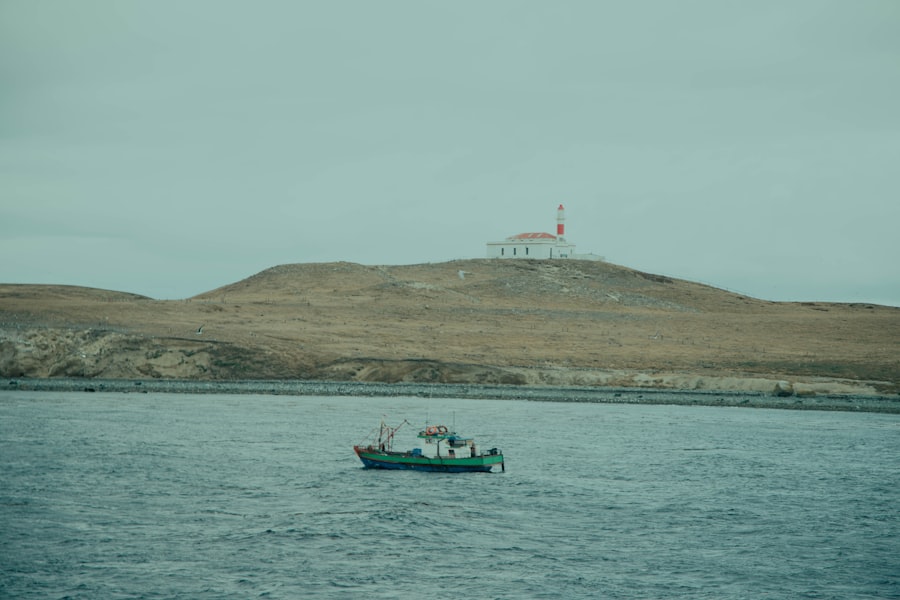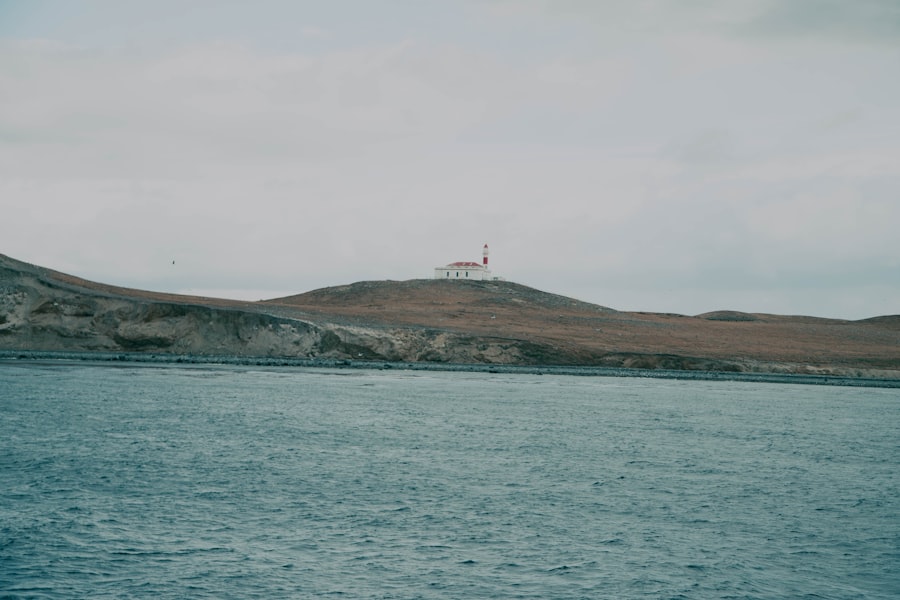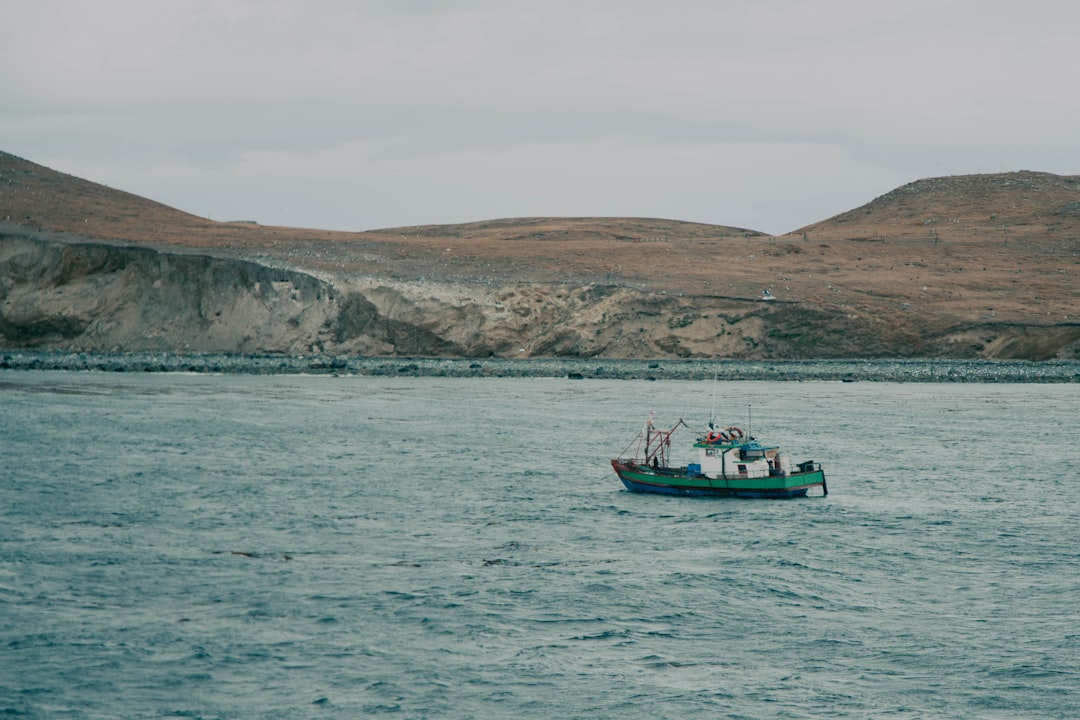The Drake Passage and the Strait of Magellan are two of the most significant maritime routes in the southern hemisphere, each with its own unique characteristics and historical importance. The Drake Passage, located between the southern tip of South America and Antarctica, is known for its turbulent waters and challenging navigation. In contrast, the Strait of Magellan, situated to the north of the Drake Passage, offers a sheltered passage through the archipelago of southern Chile.
Both waterways have played crucial roles in maritime exploration, trade, and ecological studies, making them vital to understanding the geography and history of the region. The Drake Passage is often regarded as one of the most treacherous bodies of water in the world due to its unpredictable weather patterns and strong currents. It serves as a natural barrier between the Atlantic and Pacific Oceans, facilitating the exchange of marine life and influencing global oceanic currents.
Meanwhile, the Strait of Magellan has been a key navigational route since its discovery by European explorers in the 16th century. It provides a safer alternative to the open waters of the Drake Passage, allowing vessels to traverse from one ocean to another while avoiding some of the more perilous conditions found in the surrounding seas.
Key Takeaways
- The Drake Passage is a body of water between South America’s Cape Horn and the South Shetland Islands of Antarctica, known for its rough seas and strong winds.
- The Drake Passage is named after the English explorer Sir Francis Drake, who is believed to have been the first European to sail through it in 1578.
- The Strait of Magellan is a navigable sea route located in southern Chile, named after the Portuguese explorer Ferdinand Magellan who first navigated it in 1520.
- The Strait of Magellan is an important alternative to the treacherous waters of the Drake Passage for ships traveling between the Atlantic and Pacific Oceans.
- The Drake Passage is known for its stormy weather, strong winds, and rough seas, making it one of the most challenging maritime routes in the world.
Geographical and Historical Significance of the Drake Passage
The geographical significance of the Drake Passage cannot be overstated. Stretching approximately 800 kilometers (500 miles) from Cape Horn in Chile to Antarctica, it serves as a critical junction for ocean currents, particularly the Antarctic Circumpolar Current.
The passage’s unique position also allows for a rich exchange of marine biodiversity between the Atlantic and Pacific Oceans, making it an area of great interest for scientists studying oceanography and marine ecosystems. Historically, the Drake Passage has been a site of exploration and adventure. Named after Sir Francis Drake, who navigated these waters in the late 16th century, it has been traversed by countless explorers, traders, and researchers over the centuries.
The passage was instrumental during the Age of Exploration, providing a route for ships seeking to reach the Pacific Ocean without having to navigate around Cape Horn. Its challenging conditions have also made it a testing ground for maritime technology and navigation skills, shaping the development of seafaring practices.
Geographical and Historical Significance of the Strait of Magellan

The Strait of Magellan holds its own geographical importance as a natural waterway that connects the Atlantic and Pacific Oceans. This narrow passage is approximately 570 kilometers (350 miles) long and varies in width, with some sections being quite narrow. The strait is surrounded by a series of islands and fjords, creating a complex landscape that has been both a barrier and a gateway for maritime navigation.
Its sheltered waters provide a safer alternative for vessels seeking to avoid the rough seas of the Drake Passage, making it an essential route for shipping traffic. Historically, the Strait of Magellan was a significant discovery for European explorers. Ferdinand Magellan was the first European to navigate through this strait in 1520 during his expedition to circumnavigate the globe.
This discovery opened up new trade routes and facilitated maritime commerce between Europe and Asia. Over time, the strait became a vital passage for ships carrying goods such as spices, textiles, and other valuable commodities. Its historical significance continues to resonate today as it remains an important route for modern shipping and trade.
Weather and Climate Conditions in the Drake Passage
| Month | Average Temperature (°C) | Wind Speed (km/h) | Precipitation (mm) |
|---|---|---|---|
| January | 5 | 35 | 80 |
| February | 5 | 35 | 90 |
| March | 4 | 35 | 100 |
| April | 2 | 35 | 110 |
| May | 0 | 35 | 120 |
| June | -2 | 35 | 130 |
The weather conditions in the Drake Passage are notoriously unpredictable and often extreme. The region is characterized by strong winds, high waves, and rapidly changing weather patterns that can pose significant challenges for navigation. The convergence of cold Antarctic waters with warmer currents from the north creates a volatile environment where storms can develop with little warning.
Mariners must be well-prepared to face these conditions, as they can lead to dangerous situations at sea. The climate in the Drake Passage is classified as subpolar oceanic, with cool temperatures year-round. The average sea temperature hovers around 5 degrees Celsius (41 degrees Fahrenheit), while air temperatures can drop significantly during winter months.
Precipitation is common, often falling as rain or snow depending on the season. These harsh weather conditions not only impact navigation but also influence marine life in the area, as many species have adapted to thrive in these challenging environments.
Weather and Climate Conditions in the Strait of Magellan
In contrast to the Drake Passage, the weather conditions in the Strait of Magellan are generally milder but can still be unpredictable. The strait experiences a temperate maritime climate characterized by cooler temperatures and frequent rainfall. The surrounding mountains and islands provide some shelter from strong winds, resulting in calmer waters compared to those found in the Drake Passage.
However, storms can still occur, particularly during winter months when low-pressure systems move through the region. The average temperature in the Strait of Magellan ranges from 5 to 15 degrees Celsius (41 to 59 degrees Fahrenheit), depending on the season. Rainfall is common throughout the year, contributing to lush vegetation on nearby islands.
The climate supports diverse ecosystems both on land and in water, making it an attractive area for wildlife. While navigating through this strait may be less hazardous than traversing the Drake Passage, mariners must remain vigilant as weather conditions can change rapidly.
Wildlife and Marine Life in the Drake Passage

The Drake Passage is home to a rich diversity of marine life that thrives in its cold waters. The nutrient-rich environment supports various species of fish, including krill, which serves as a crucial food source for larger marine animals such as whales and seals. The passage is also frequented by several species of seabirds that rely on these waters for feeding and nesting.
Among them are albatrosses, petrels, and penguins, which are often seen gliding gracefully over the waves or diving into the water to catch fish. In addition to its avian inhabitants, the Drake Passage is known for its impressive populations of marine mammals. Species such as humpback whales, orcas, and southern right whales migrate through these waters during certain times of the year.
The presence of these majestic creatures attracts researchers and wildlife enthusiasts alike who seek to observe their behaviors in their natural habitat. The ecological significance of this region extends beyond its immediate inhabitants; it plays a vital role in maintaining global biodiversity.
Wildlife and Marine Life in the Strait of Magellan
The Strait of Magellan also boasts a diverse array of wildlife and marine life that reflects its unique ecological characteristics. The sheltered waters provide an ideal habitat for various fish species, including salmon and trout, which are important both ecologically and economically. The strait’s rich marine ecosystem supports an abundance of crustaceans and mollusks that contribute to local fisheries.
Birdlife is abundant in this region as well, with numerous species nesting along its shores or feeding in its waters. Seabirds such as cormorants, gulls, and various types of ducks can be observed throughout the strait. Additionally, marine mammals like sea lions and dolphins are commonly spotted in these waters, adding to the area’s biodiversity.
The Strait of Magellan serves as an essential breeding ground for many species, highlighting its ecological importance within southern Chile.
Navigational Challenges and Hazards in the Drake Passage
Navigating through the Drake Passage presents numerous challenges due to its unpredictable weather patterns and strong currents. Mariners must contend with high waves that can reach heights of up to 15 meters (49 feet) during storms, making it difficult for vessels to maintain stability. The convergence of cold Antarctic waters with warmer currents creates turbulent conditions that can lead to sudden changes in sea state.
In addition to rough seas, navigators must also be aware of icebergs that may drift into shipping lanes from nearby Antarctica. These floating masses pose significant hazards for vessels traversing this passage, requiring careful monitoring and navigation strategies to avoid collisions. The combination of these factors makes sailing through the Drake Passage a daunting task that demands skillful seamanship and thorough preparation.
Navigational Challenges and Hazards in the Strait of Magellan
While navigating through the Strait of Magellan is generally considered safer than traversing the Drake Passage, it is not without its own set of challenges. The strait’s narrow passages can create bottlenecks where vessels may encounter difficulties maneuvering safely. Additionally, strong tidal currents can affect navigation, particularly in constricted areas where water flows rapidly through narrow channels.
Mariners must also be cautious of shifting weather patterns that can lead to sudden changes in visibility or wind conditions. Fog is common in this region, which can obscure navigational markers and make it difficult for vessels to maintain their course. Despite these challenges, experienced sailors often find that careful planning and knowledge of local conditions can mitigate many risks associated with navigating through this important waterway.
Advantages and Disadvantages of Navigating the Drake Passage
Navigating through the Drake Passage offers several advantages despite its notorious reputation for treacherous conditions. One significant benefit is its direct route between South America and Antarctica, making it an essential passage for research vessels and expeditions seeking access to polar regions. The passage allows for efficient transportation of goods and personnel between these two areas while facilitating scientific research on climate change and marine ecosystems.
However, these advantages come with considerable disadvantages as well. The unpredictable weather patterns can lead to dangerous situations at sea, requiring vessels to be equipped with advanced technology and experienced crews capable of handling emergencies. Additionally, delays caused by adverse weather conditions can disrupt schedules for shipping companies or research expeditions alike.
Advantages and Disadvantages of Navigating the Strait of Magellan
Navigating through the Strait of Magellan presents its own set of advantages that make it an appealing choice for many mariners. One primary benefit is its sheltered waters compared to those found in the Drake Passage; this makes it a safer option for vessels seeking to avoid rough seas while still facilitating transit between oceans. The strait’s relatively calm conditions allow for easier navigation and reduce wear on ships.
On the downside, navigating through this strait may involve longer travel times due to its winding course compared to more direct routes available elsewhere. Additionally, while generally safer than the Drake Passage, navigators must remain vigilant about local hazards such as strong currents or shifting weather patterns that could impact their journey.
The Drake Passage and the Strait of Magellan are two significant maritime routes at the southern tip of South America, each with its own unique challenges and historical significance. While the Drake Passage is known for its turbulent waters and is a key route for vessels traveling between the Atlantic and Pacific Oceans, the Strait of Magellan offers a more sheltered passage but is narrower and more complex to navigate. For those interested in exploring more about these fascinating maritime routes and their geographical significance, you can find additional insights in a related article on MyGeoQuest. This resource provides a deeper understanding of the geographical and historical context of these important passages.
WATCH NOW! Drake Passage: Earth’s Deadliest Waters Revealed
FAQs
What is the Drake Passage?
The Drake Passage is a body of water located between the southern tip of South America and the South Shetland Islands of Antarctica. It connects the southwestern part of the Atlantic Ocean with the southeastern part of the Pacific Ocean.
What is the Strait of Magellan?
The Strait of Magellan is a navigable sea route in southern Chile, separating mainland South America to the north and Tierra del Fuego to the south. It connects the Atlantic and Pacific Oceans.
Which route is more commonly used for maritime travel, the Drake Passage or the Strait of Magellan?
The Strait of Magellan is more commonly used for maritime travel due to its relatively calmer waters and shorter distance compared to the Drake Passage.
What are the main differences between the Drake Passage and the Strait of Magellan?
The Drake Passage is known for its rough seas and strong winds, making it one of the most challenging maritime routes in the world. In contrast, the Strait of Magellan offers a more sheltered and navigable passage for ships.
Are there any advantages to using the Drake Passage over the Strait of Magellan?
While the Drake Passage is known for its challenging conditions, it is often preferred by some expedition cruises and scientific research vessels due to its rich marine wildlife and pristine natural environment.
Which route is more suitable for commercial shipping and trade, the Drake Passage or the Strait of Magellan?
The Strait of Magellan is more suitable for commercial shipping and trade due to its easier navigation and shorter distance, which can result in cost savings and faster transit times for cargo ships.
